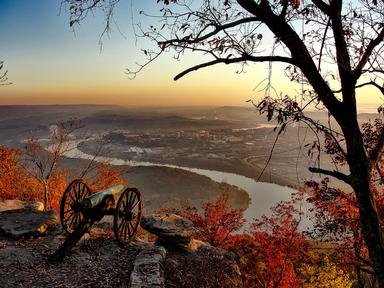Quiz Answer Key and Fun Facts
1. After the Battle of Booneville in July 1862, Sheridan was promoted to one-star general. What is another name for a one-star general in the US Army?
2. Sheridan commanded a division in combat for the first time in the Battle of Perryville, Oct. 8, 1862. The battle was important because it took place in a border state and determined the fate of that state. In which bluegrass state was Perryville?
3. For his actions in the Battle of Stones River Dec. 31, 1862, Sheridan was promoted to major general. In six months he had risen from a captain in the Union Army to a major general. How many ranks did this encompass at the time of the Civil War (captain through major general)?
4. After the success of the Tullahoma Campaign in the summer of 1863, the Union Army of the Cumberland invaded Georgia only to suffer the worst defeat of Union forces in the Western Theater of the war. What battle was this? (Hint: the battle was named after a tributary creek that flows into the Tennessee River)
5. Sheridan's division played a central role in the Battle of Missionary Ridge. This battle was the decisive battle in which larger campaign? (Hint: it reminds me of choo choo trains).
6. While in command of the Cavalry Corps of the Army of the Potomac, Sheridan led his men in the Battle of Yellow Tavern. Which Confederate cavalry general, long the bane of the Union Army, was killed in this engagement?
7. Sheridan commanded an entire army for the first time in the Valley Campaign of 1864. The name of his army and the name of the valley are one in the same. Which valley was this that the Confederates had been using for the entire war to launch attacks on the North?
8. Sheridan's victory in which battle on April 1,1865 led Lee to abandon his entrenchments at Petersburg and culminated in Lee's surrender eight days later? (Hint: hand spoons)
9. After the Civil War, Sheridan used the strategy of total war he had learned in that war to conduct the Indian Wars. Which animal vital to the Plains Indians did Sheridan encourage hunters to kill in great numbers?
10. After the Civil War, Sheridan was instrumental in the establishment and preservation of the first national park anywhere in the world. Which park is this?
Source: Author
tazman6619
This quiz was reviewed by FunTrivia editor
bloomsby before going online.
Any errors found in FunTrivia content are routinely corrected through our feedback system.

